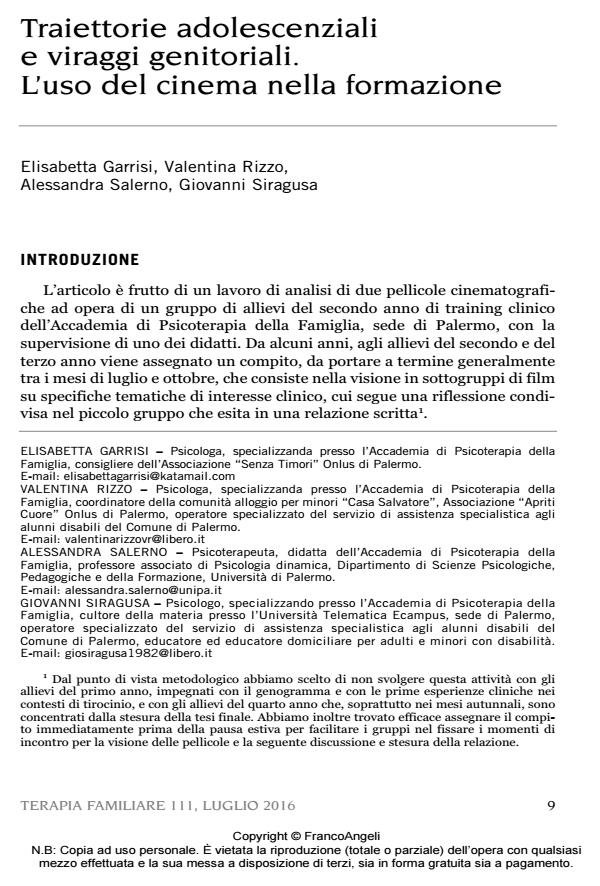Traiettorie adolescenziali e viraggi genitoriali. L’uso del cinema nella formazione
Journal title TERAPIA FAMILIARE
Author/s Elisabetta Garrisi, Valentina Rizzo, Alessandra Salerno, Giovanni Siragusa
Publishing Year 2016 Issue 2016/111
Language Italian Pages 21 P. 9-29 File size 142 KB
DOI 10.3280/TF2016-111002
DOI is like a bar code for intellectual property: to have more infomation
click here
Below, you can see the article first page
If you want to buy this article in PDF format, you can do it, following the instructions to buy download credits

FrancoAngeli is member of Publishers International Linking Association, Inc (PILA), a not-for-profit association which run the CrossRef service enabling links to and from online scholarly content.
The use of the films in psychotherapy education is quite widespread today starting from the idea that the reflection on the themes present in the film stories will enable students to make connections, to define diagnostic and relational hypothesis, to use different keys of reading. Through the choice of films proposing stories centered on the succession of critical life events, on the transformation of relations, on the interweaving of events in the different generations, it is possible, for family therapists in training led by the teacher, to reflect on the different social representations of the family, strengthen and make more usable theoretical concepts exemplified in some particular scenes or dialogues, using what has been observed in their clinical practice. This article describes a learning experience conducted in a second year of a systemic-relational psychotherapy training through the use of two films. The students, divided into subgroups, after watching the films, have produced a report focused on emerging issues, on theoretical assumptions related to the problems of the protagonists and the clinical implications present.
Keywords: Cinema, education, adolescence, adoption, parenting, peers
Elisabetta Garrisi, Valentina Rizzo, Alessandra Salerno, Giovanni Siragusa, Traiettorie adolescenziali e viraggi genitoriali. L’uso del cinema nella formazione in "TERAPIA FAMILIARE" 111/2016, pp 9-29, DOI: 10.3280/TF2016-111002